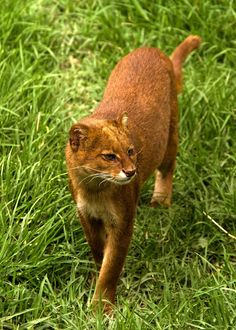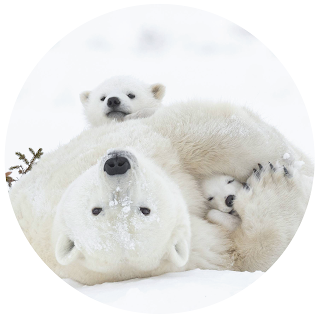Shannon O'Hehir's Blog: The Canada Lynx
Born and raised in St. Paul, Minnesota, I was more of a hockey fan than basketball. Although that fact didn't prevent my grandma from getting me a Minnesota Lynx jersey for my eighth birthday. The Lynx are the resident women's basketball team in my hometown. Prior to receiving that gift, I hadn't even known lynxes existed.
https://davmn.org/wp-content/uploads/2016/07/MN-Lynx.png
Fast forward about 15 years to today. I've recently become aware that the lynx are much more than a basketball team mascot. The U.S. Fish & Wildlife Service (FWS) has placed the Canada lynx (Lynx canadensis) on the endangered species list and their current status is "threatened." This is very unfortunate news for this lovable wild cat.
http://www.zooborns.com/.a/6a010535647bf3970b0176176e4f53970c-500wi
Description
Canada
lynx are medium-sized wild cats, weighing about 20 pounds and measuring
30-35 inches long. Their large feet enable them to traverse snowy
terrain and hunt their main source of prey, the snowshoe hare. As seen in the picture below, the Canada lynx have a dense, silver-brown coat, black tufted ears and yellow-hazel eyes.
https://i.pinimg.com/originals/ce/1e/05/ce1e057035aa19cbe85907cbeae9ac18.jpg
Ecology
Lynx can be found in a widely distributed range across Canada, Alaska, and certain parts of the contiguous United States (including the Rockies, the Northeast, and the Great Lakes). The lynx inhabits a particular type of ecosystem known as the boreal forest. Boreal forests are characterized by long, harsh winters and short, dry summers. The tree canopy within boreal forests is dominated by pine, fir, larch, spruce, birch and aspen trees. This ecosystem type is opportune for the lynx, especially when it supports high densities of snowshoe hare.
http://www.nhptv.org/wild/images/canadalynxmap.jpg
Population Dynamics
Not only do lynx require boreal forests and large populations of snowshoe hare to survive but they also need large expanses of forest with deep snow (greater than 106 inches per year) due to their ranging, mobile lifestyle. The FWS has observed that lynx populations in the United States are influenced by population dynamics in Canada. Because Canada is a source of lynx emigration into the US, it is important to maintain connectivity between Canada and the United States to ensure long-term persistence of the lynx.
http://borealforestfacts.com/wp-content/uploads/2013/09/marquee_all_of_us_borea_forest_alt2.jpg
Listing Date and Type
The FWS placed the Canada lynx on the endangered species list as "threatened" on March 24th, 2000. The main threats to the continued existence of the lynx are timber harvest and recreation.
Proper forest management measures had not been enforced in the past,
allowing pre-commercial thinning and fire suppression to take place
throughout core areas of lynx habitat. Additional
factors negatively affecting the lynx include accidental lynx trapping
where legal trapping of bobcat, coyote and wolverine exist and high volume traffic on roads which divide lynx habitat.
https://i.cbc.ca/1.4091777.1496265523!/cpImage/httpImage/image.jpg_gen/derivatives/16x9_620/softwood-lumber-20170425.jpg
Recovery Plan
The
recovery plan produced by the FWS revolves around protecting areas of
core habitat for the Canada lynx. This involves establishing federal
management practices and working with key state and private managers to
ensure adequate quality and quantity of habitat. Additionally, the FWS
plans to monitor changes in lynx population and distribution to
understand where to facilitate movement broadly between core habitat
areas. Identifying limiting factors and trends will help the FWS ensure
that they are appropriately managing boreal forest conditions for lynx well-being.
https://images.fineartamerica.com/images-medium-large/1-two-canada-lynx-lynx-canadensis-kittens-richard-wear.jpg
What can you do?
It's not just up to the U.S. Fish & Wildlife Service to protect the Canada lynx. We can help save the lynx too! By doing a simple google search, I found the Defenders of Wildlife. They are committed to restoring wildlife across the globe, both through grassroots and governmental activism. We can help by donating monetarily and "adopting" a lynx to further conservation efforts. Or we can donate time and send a message to government leaders through the Defenders of Wildlife website. Please join the effort and help save the Canada lynx!
1. Yale University. Boreal Forest Ecology | Global Forest Atlas, globalforestatlas.yale.edu/boreal-forest/boreal-ecoregions-ecology/boreal-forest-ecology.
2. U.S. Fish and Wildlife Service. Listed Species Believed to or Known to Occur in Minnesota, ecos.fws.gov/ecp0/reports/species-listed-by-state-report?state=MN&status=listed.
3. U.S. Fish and Wildlife Service. Recovery Outline.http://ecos.fws.gov/docs/recovery_plan/final%20draft%20Lynx%20Recovery%20Outline%209-05.pdf.
4. U.S. Fish and Wildlife Service. Species Profile for Canada Lynx (Lynx canadensis). ecos.fws.gov/ecp0/profile/speciesProfile?spcode=A073. 5. Defenders of Wildlife. How you can help Canada Lynx. www.defenders.org/canada-lynx/how-you-can-help.











The connection you make to your species in the first paragraph is a very creative opening. A link probably would have been helpful in the "what you can do section" so that it is more inviting to go to the website. The pictures were relevant to each of your topics, which makes it all flow.
ReplyDeleteBy: Sage Massey
DeleteI really like that you tied in a personal connection to this, very creative! Providing an image for the "What can you do" section on the website where people can donate, adopt, etc. was very helpful. That way when people go to the website, they know exactly what to look for.
ReplyDelete-Mckenna Moura
Your personal story is a cool way to begin the blog. The pictures, especially of the kittens in the Recovery Plan section, totally pull people in to want to help this animal. I also like what you said about protection of this species (and others) not only being up to the USFWS, but on all of us.
ReplyDelete-Perry Nalle
I really liked your personal touch to this blog and i felt that you did a good job of letting your writing voice shine through. I also really liked your photos and liked the push you gave us to help this endangered species.
ReplyDelete-Parker Ornellas
I enjoyed the set up of your blog! I really enjoyed that you placed a small blurb about the reason you chose this animal. I knew about the animal lynx but never knew much until I read your blog.
ReplyDeleteChristine Okimura
DeleteBIO 227
I like the personal connection you have with the lynx. It made the blog more relatable and I could tell you were writing about the animal at a personal level.
ReplyDelete-Fiona McCallion
You had a lot of specific ways to help protect the Canada lynx, which was very interesting to read. There are also a lot of images throughout that really give an idea of what the lynx is like.
ReplyDelete-Kristen Nagamatsu
I really enjoyed how you tied your choice of an animal back to your life and included that connection in the beginning.
ReplyDeleteBryn Mulligan
I like how you connected your decision of animal with your gift from your grandmother.
ReplyDelete-Ali Murray